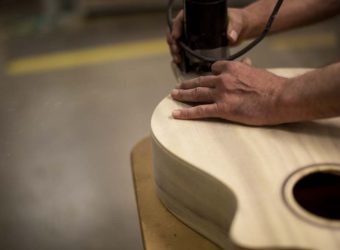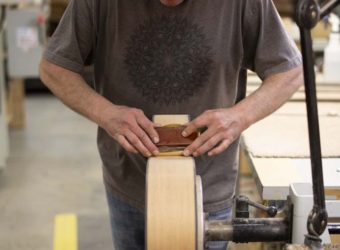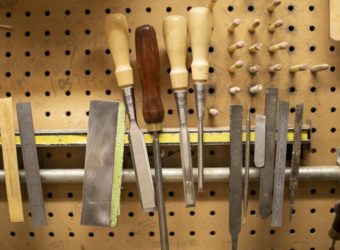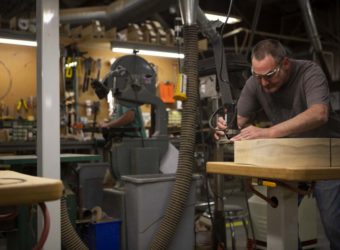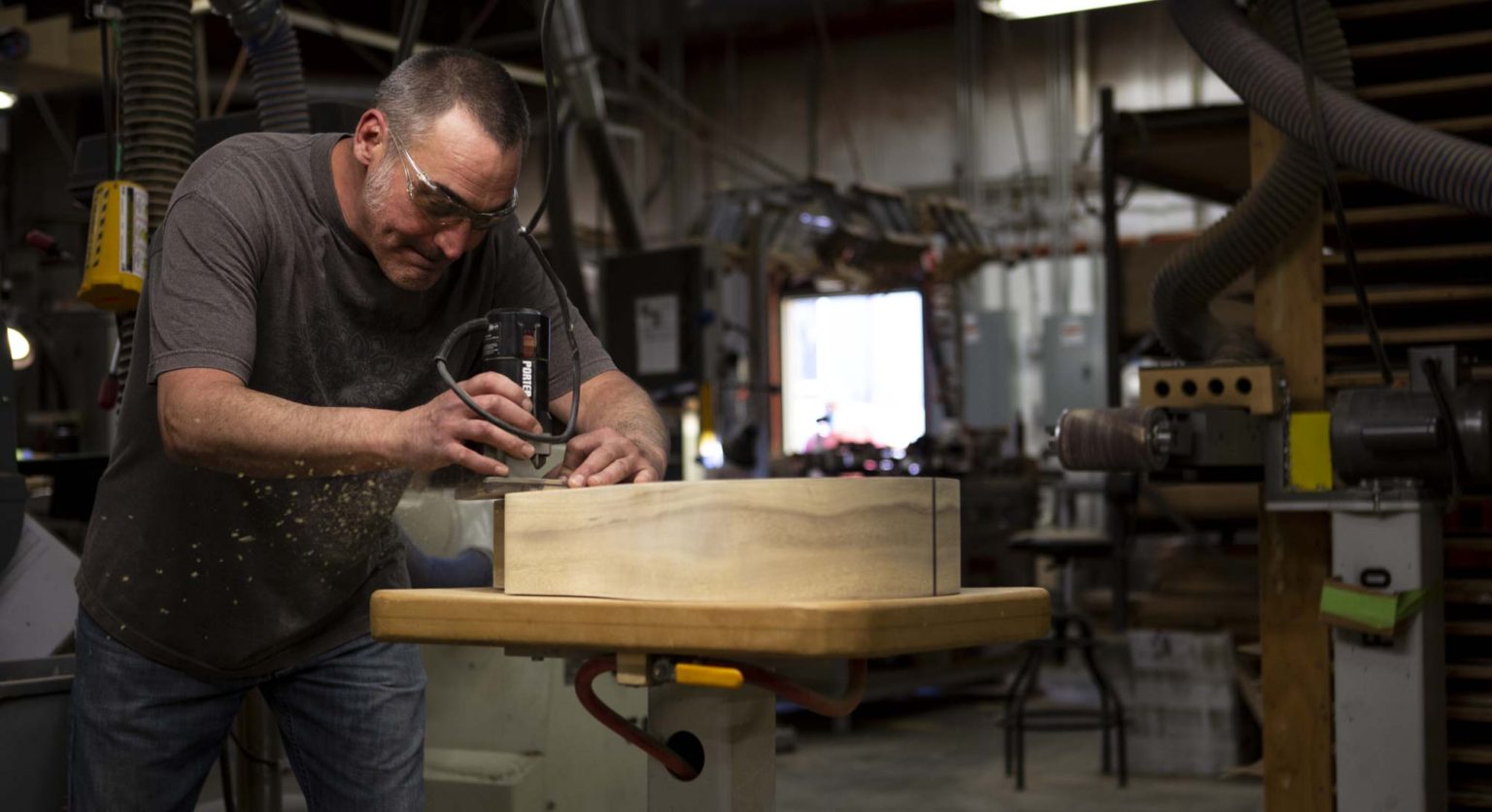
The Corvallis native loves handcrafting fine Made in Bend instruments out of sustainable local tonewood
Aaron Adams is as Oregon as it gets, and so is myrtlewood.
At home these days, the Breedlove craftsman of nearly 20 years has been dividing his time between constructing a new chicken coop for his wife’s cackling brood and making a myrtlewood ukulele for his son, to supplant the lad’s small stash of Designed in Bend guitars.
“Luthiery ruins you,” Adams chuckles in regard to the hen house, noting that he’s been obsessing over fine details that the pullets aren’t likely to appreciate. As for the ukulele, it was inspired by an heirloom cigar box passed down from the boy’s maternal great-grandfather. Adams opted instead to fashion a similar shape from his favorite stuff.
“I got Jenn’s permission to use that old box, which is just brimming with vintage character—then I got to thinking, it would be so cool to just start from scratch and make a new one out of pretty Oregon wood and let the original be. So this one I’m finishing up is made out of all myrtle, which is absolutely cool. It’s just a rectangle, instead of curves, but it’s kind of fun. We’ll see how it sounds!”
A Corvallis native, Adams has been in Bend for 18 years, and when namesake Kim Breedlove was honing his early ukes—now the basis for Breedlove’s Luau Series—Adams assisted in parts of the process. Under his mentor’s tutelage, he created a myrtle and Sitka tenor for his wife, which she’s been playing for years.
“It’s a booming one,” Adams smiles. “It definitely puts it out there for a ukulele.”
On the clock, Adams—an inveterate whittler who’s been carving spoons, spatulas and chopsticks while waiting to get back in the shop—is a body man. He receives, essentially, a sketch of a guitar on his bench, with top, back and sides in place, but little more. When it leaves his grasp, following trimming, binding, sanding and a dozen other exquisite maneuvers, it is ten steps closer to reality and ready for the neck that will complete its familiar shape.
Adams, of course, works with all of the classic guitar woods—spruce, cedar, rosewood, mahogany and so forth. His favorite, as noted is myrtle, partly, he says, because it’s a point of Beaver State pride.
“I’m into local stuff,” Adams affirms. “I think Oregon’s a pretty killer state. In addition to local walnut and maple, myrtlewood’s really one of the main tonewoods we use. Breedlove really introduced it into luthiery.”
An outdoorsman, like so many of his colleagues at Breedlove, Adams has even trekked to the Pacific coast, southwest of Bend, and stood amidst bushy, bendy myrtles in their natural sea-soaked, wind-blasted habitat.
“I’ve got a friend who lives in a pretty neat area near there, “ he recalls. “Hiking around a lagoon one morning, we were picking all these berries and thinking, ‘well this would be a great place for bears, we should make some noise.’ Later that day, out on his boat, we got close to shore and sure enough, from a safe distance, we watched this big black bear just furiously tearing the grass apart. It was awesome, and we were glad we didn’t run into him earlier!”
The fact that all of Breedlove’s Oregon myrtlewood is sustainably sourced, stemming from salvaged and selectively harvested trees, is “huge” according to Adams. “How can you not be on board with that!?”
As a builder with a deep background in joinery, Adams says myrtle, which has a pleasing yeasty aroma, is uniquely “buttery,” easy to bend and sand, and a pleasure to work with.
Unlike his wife and son, Adams doesn’t play, so his perspective on the beauty of an instrument is that of a painter or, perhaps more appropriately, a sculptor. Myrtle, he says, is magic, with its wildly diverse grain patterns revealing one new epiphany after another.
“Myrtle has such a beautiful color range, from blondes to greens to grays. There’s so much going on with it. It’s one of the most variant woods out there, with tiger eye and fiddleback patterns and everything in between. And we’re choosing to buy stuff that has tons of character and beautiful reflective quality. Some of it has, like, a beeswing kind of shimmer to it.”
“It might even look a little dull until you wet it to bring out the grain. Then, it’s just boom! And you can see what it’s really going to look like under the finish. Wow.”
